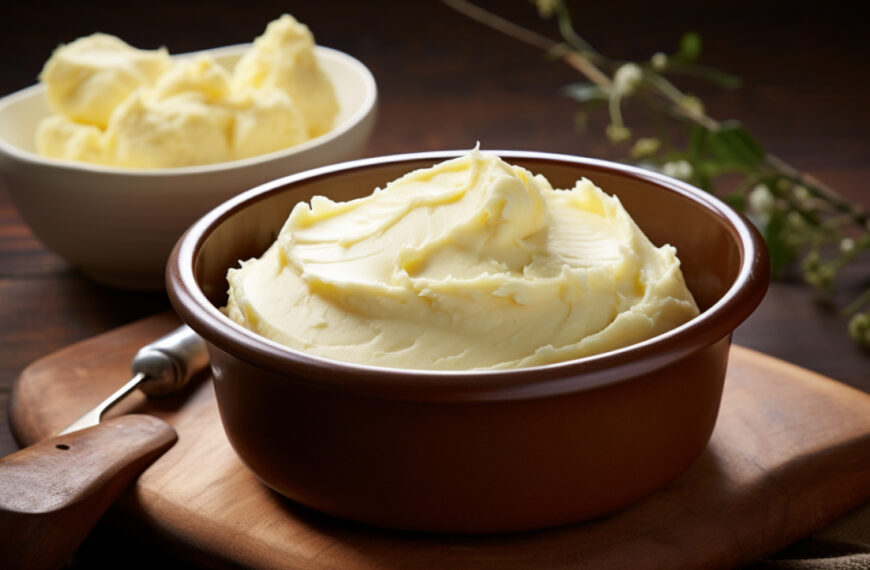Unlock Smooth Moves: Essential Oils to Relieve Constipation
Those uncomfortable days when your digestive system seems to hit the pause button can be truly frustrating. I’ve been there too, and I know how constipation can affect your entire day. The good news? Nature has provided some remarkable solutions in the form of essential oils that can help get things moving again.
After working with essential oils for digestive issues for years, I’ve discovered which ones truly make a difference when it comes to constipation relief. Let’s explore how these powerful plant extracts can help restore your digestive rhythm naturally.
Oils to the Rescue: Quick Relief for Constipation
When your digestive system slows down, essential oils can offer a gentle nudge to help restore normal bowel movements. But what makes these aromatic wonders so effective for constipation?
Essential oils work through several mechanisms to address constipation. Some relax tense intestinal muscles, while others stimulate digestive motility to encourage bowel movements. The science behind this is fascinating!
Peppermint essential oil, for example, relaxes gastrointestinal smooth muscles through calcium channel blockade and enteric nervous system modulation. This has been demonstrated in clinical trials for conditions like IBS and dyspepsia. When your intestinal muscles are relaxed, it’s easier for waste to move through your system.

Other oils like fennel stimulate digestive motility, acting as natural laxatives. This dual approach—relaxing tight muscles while gently stimulating movement—makes essential oils particularly effective for constipation relief.
What’s even more interesting is how these oils can help address the psychological aspects of constipation. Stress and anxiety often contribute to digestive slowdowns, and many essential oils have calming properties that help ease this mind-gut connection.
Top Essential Oils to Ease Constipation
When it comes to answering the question of what essential oil helps with constipation, several stand out for their effectiveness. Here are the stars of the show:
Peppermint Oil
Peppermint oil is my go-to recommendation for constipation relief. Its active component, menthol, works wonders for digestive issues. Clinical studies have shown peppermint oil’s effectiveness for IBS, functional dyspepsia, and other digestive complaints.
What makes peppermint special is its ability to relax the smooth muscles of the digestive tract while simultaneously stimulating bile flow, which helps break down fats and move food through the intestines more efficiently. This dual action makes it particularly effective for constipation relief.
Fennel Oil
Fennel essential oil has been used for centuries to enhance digestive health. It contains compounds that stimulate digestive motility, making it an excellent natural laxative.
I’ve found fennel oil particularly helpful for constipation accompanied by bloating and gas. Its carminative properties help dispel gas while its gentle stimulating action encourages bowel movements.

Bergamot Oil
Bergamot essential oil shows promising results for digestive issues. Research has documented its antispasmodic effects on intestinal tissues, significantly reducing muscle contractions in experimental settings.
While bergamot oil’s effects on constipation need more clinical validation in humans, its ability to relax intestinal muscles makes it a valuable addition to constipation-fighting blends.
Rosemary Oil
Rosemary oil exhibits spasmolytic properties that help suppress muscle spasms in the digestive tract. This makes it particularly useful for constipation associated with intestinal cramping.
Beyond its direct effects on the digestive system, rosemary oil’s invigorating scent can help reduce stress—an often overlooked factor in chronic constipation.
Ginger Oil
Ginger essential oil stimulates digestive enzymes and increases the movement of food through the digestive tract. Its warming properties help increase circulation to the digestive organs, which can promote better bowel function.
I often recommend ginger oil for constipation accompanied by feelings of coldness or sluggishness in the digestive system.
Marjoram Oil
Marjoram essential oil has gentle antispasmodic properties that help relax tense intestinal muscles. This relaxation effect can help ease the passage of stool through the intestines.
It’s particularly helpful for constipation linked to stress and tension, as it has calming properties that extend beyond just the digestive system.
How to Use Essential Oils for Constipation
Knowing which essential oils help with constipation is just the first step. Using them correctly is equally important for effective relief. Here are the most effective application methods:
Abdominal Massage
Abdominal massage with diluted essential oils is one of the most effective methods for constipation relief. Research has shown that abdominal massage with aromatherapy oils improves stool consistency, particularly in older adults.
To create an effective massage blend:
- Combine 3-4 drops of your chosen essential oil (peppermint and fennel work particularly well) with 1 tablespoon of carrier oil like sweet almond or jojoba.
- Warm the oil mixture slightly between your palms.
- Massage your abdomen in a clockwise direction (following the direction of your colon) for 5-10 minutes.
- Focus on the lower right side of your abdomen, moving up, across, and down the left side.
- Repeat this massage 2-3 times daily to stimulate intestinal motility.
This method combines the benefits of both the essential oils and the mechanical stimulation of massage, making it doubly effective for constipation relief.
Inhalation
Inhaling essential oils can provide additional relaxation benefits through aromatic pathways, which is particularly helpful if stress is contributing to your constipation.

Try adding 3-5 drops of peppermint or rosemary oil to a diffuser, or simply inhale directly from the bottle for 30 seconds. The aromatic compounds enter your bloodstream through your lungs and can help relax your entire system, including your digestive tract.
Warm Compress
A warm compress with essential oils can help relax abdominal muscles and stimulate bowel movement:
- Add 4-5 drops of essential oil to a bowl of warm water.
- Soak a clean cloth in the mixture.
- Wring out excess water and place the compress on your abdomen.
- Cover with a dry towel to retain heat.
- Leave in place for 10-15 minutes.
This method is particularly soothing for constipation accompanied by discomfort or cramping.
Bath Soak
A relaxing bath with essential oils can help ease constipation through both aromatherapy and absorption through the skin:
- Mix 5-7 drops of your chosen essential oil with 1 tablespoon of carrier oil or unscented liquid soap.
- Add this mixture to a warm bath.
- Soak for 15-20 minutes, focusing on relaxing your entire body.
The combination of warm water and essential oils helps relax abdominal muscles and reduce stress, both of which can help relieve constipation.
Creating Effective Blends
For the best essential oil blend for constipation, I often combine oils with complementary properties:
- Stimulating Blend: 3 drops peppermint + 2 drops ginger + 2 drops fennel in 1 tablespoon carrier oil
- Relaxing Blend: 3 drops bergamot + 2 drops marjoram + 2 drops rosemary in 1 tablespoon carrier oil
When choosing a carrier oil for your constipation blends, consider jojoba or sweet almond oil. Both absorb well into the skin and won’t interfere with the therapeutic properties of your essential oils.
Safety First: Precautions and Alerts
While essential oils are natural, they’re also powerful. Here are some important safety considerations when using essential oils for constipation:
Dilution is Essential
Never apply essential oils directly to your skin without dilution. For adults, a safe dilution is typically 2-3% (about 12-18 drops of essential oil per ounce of carrier oil). For sensitive skin, reduce to 1% (about 6 drops per ounce).
If you’re new to diluting essential oils, start with lower concentrations and increase gradually as needed.
Ingestion Caution
Despite what you might read elsewhere, I don’t recommend ingesting essential oils for constipation unless under the guidance of a qualified aromatherapist or healthcare provider. The concentrated nature of essential oils means they can irritate the digestive tract if taken internally without proper knowledge.

Special Populations
Are essential oils for constipation safe for children? Most essential oils should be used with extra caution or avoided entirely for young children. If you’re considering using essential oils for a child’s constipation, consult with a healthcare provider first and use at much lower dilutions (0.25-0.5%).
Pregnant women should also exercise caution with essential oils. Some oils like fennel have estrogenic properties that make them unsuitable during pregnancy.
Potential Side Effects
While peppermint oil demonstrates a favorable safety profile in clinical use, some people may experience skin irritation, especially with repeated applications. If irritation occurs, knowing how to neutralize essential oils on the skin is important.
If you experience any adverse reactions like rashes, headaches, or increased digestive discomfort, discontinue use immediately.
When to See a Doctor
Essential oils can help with occasional constipation, but persistent or severe constipation requires medical attention. See a healthcare provider if:
- Constipation lasts longer than two weeks
- You have severe abdominal pain
- You notice blood in your stool
- Constipation alternates with diarrhea
- You’re losing weight unintentionally
These symptoms could indicate a more serious underlying condition that requires proper medical diagnosis and treatment.
Wrapping Up: Smooth Moves Ahead
Essential oils offer a natural, gentle approach to relieving constipation when used correctly. Peppermint, fennel, bergamot, rosemary, ginger, and marjoram oils each bring unique properties that can help stimulate bowel movements and ease discomfort.
For the most effective constipation relief, I recommend:
- Starting with peppermint or fennel oil for their well-documented effects on digestive health
- Applying oils through gentle abdominal massage following the path of your colon
- Using proper dilution and application techniques for safety
- Combining essential oil use with adequate hydration, fiber intake, and regular physical activity
Remember that while essential oils can provide relief for occasional constipation, they work best as part of a holistic approach to digestive health. Strategic combinations of herbal extracts with essential oils may enhance gastrointestinal benefits, though research continues to develop in this area.

For convenient application, consider using essential oil rollers pre-diluted with your favorite constipation-relieving blend. These make it easy to apply oils during the day for ongoing support.
If you’re also dealing with related digestive issues, you might find relief with essential oils for bloating or essential oils for cramps, as these conditions often go hand-in-hand with constipation.
With the right essential oils and application methods, you can support your body’s natural digestive processes and get back to feeling comfortable and regular again.












